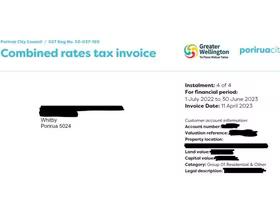
Fiscal policy might be more important than interest rates this year
This opinion piece was first published on Stuff on 12 February 2024.
In New Zealand’s laissez-faire economy, there are two main institutions with the ability to have a significant effect on economic outcomes. One of those institutions, the Reserve Bank, attracts plenty of attention and generates its fair share of column-inches with its monetary policy decisions. But it’s debatable whether the government and its fiscal settings are subject to anywhere near the same level of ongoing scrutiny. We’re not talking about political punditry, but serious economic analysis.
The disparity in attention is understandable. Interest rate changes have an observable and direct effect on the financial position of most households, changing their mortgage payments or returns on their savings. The big swings in monetary policy over the last couple of years have amplified the effects of interest rate movements on household budgets.
In contrast, aside from tax and welfare changes, most of the government’s fiscal decisions have no direct effect on households. If any transmission path does exist, it is a long and circuitous one that makes it hard to connect cause and effect. Changing the official cash rate means my mortgage repayment changes. But changing the funding to a government department doesn’t show up in my face (or my banking app). Perhaps we should be talking more about the government’s spending decisions.
Government only ever seems to get bigger
Getting a long-term picture of government spending as a percentage of GDP is problematic, because accounting changes over time mean that we’ve got inconsistent data. We’ve done our best to bring together the most appropriate government spending figures over time, and they do show some compelling outcomes.
- There was a gradual upward trend in the size of government between the end of World War I and the mid-1970s.
- There was an increase in the size of government during the Muldoon years (1975-84) that was never fully reversed.
- Using the current preferred measure of core crown expenses, government spending in 2022 was higher as a proportion of the economy than at any time since the early 1990s.
These trends are ratified by GDP data, which shows that government consumption spending is at a record high.
Being open to the nuances of the fiscal debate
Are we okay with the government making up a bigger and bigger share of the economy? I’m certainly not advocating for a return to the government model of 120 years ago, with non-existent social welfare and limited provision of public services. However, the debate about government spending often seems to become unhelpfully reductive – National might be characterised as lacking compassion for poor people because they want to increase sanctions for Jobseeker beneficiaries, for example. We need to push beyond this sort of rhetoric to recognise that trade-offs and choices are at the core of government spending decisions, unless the tax take is deliberately grown to accommodate all new spending ideas and initiatives.
An example of the potentially additive nature of government spending is in the Ministry of Housing and Urban Development’s (HUD) recent Briefing for incoming ministers. Despite the “fiscally constrained environment”, HUD implicitly advocates the extension of existing housing support programmes, otherwise “Government investment in new housing supply risks falling at the same time construction activity is in decline.” In essence, HUD seems to be calling for more funding so the government can effectively act as a cushion for the construction industry during one of its regular cyclical downturns.
To be fair to HUD, the Ministry also advocates for its funding for programmes to be rebalanced over time away from interim housing, which it notes “is expensive and does not provide people with stable housing.” Too often, though, this sort of reprioritisation is lost in the desire for empire building and protection of funding streams. No department is going to voluntarily admit that it has $500m of money that might be better used elsewhere. And so we join many other countries by offering a subsidy for films to be made, at the same time as the quality or capability of our civil infrastructure, or health system, or defence force continue to be eroded.
Will we just get cuts for cuts’ sake?
The National-led government has asked departments and ministries to identify spending cuts of 6.5-7.5% as part of its efficiency drive. Within Wellington, the anecdotes suggest that these savings won’t necessarily be achieved by identifying and cutting functions that are more peripheral or offer fewer benefits to the government and taxpayers. Instead, we seem more likely to see cuts being achieved by the path of least resistance – disestablishing roles that are already vacant and pausing proposed work programmes before they have got underway. This ad hoc approach might realise the fiscal outcomes that the government is looking for, but it is far from guaranteed that it will achieve the most effective outcomes in terms of prioritising the use of limited taxpayer funds.










